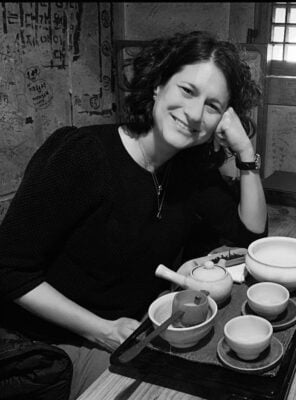For tea professional Cortilia Lin temperature is very important in making a good cup of tea. But how does the temperature impact the taste of tea? “The focus commonly lies on the temperature of water with which the tea is brewed”, Lin says. “The other side of the coin however is how the temperature of tea affects the intensity of the taste. In other words, how our taste buds work at varying degrees of temperature of tea.” Read her column.
“Interestingly, temperature influenced the maximum intensity perceived from astringent, bitter, and sour stimuli, but not from the sweet stimulus”, a study done by researchers has suggested. Astringency and bitterness are the two key flavors to be balanced in the tea tasting experience. The research mentioned above has concluded that astringency was more intense when the solution was warm, and the intensity of the flavor lasted longer with the warm solution than with the cold one. And bitterness was more intense with the cold solution and the flavor intensity declined faster with the cold solution than with the warm one.
And the taste of tea would change more dramatically, in my personal experience, when the temperature of the tea evolves from 50 degree Celsius to room temperature. It is always a fun experience to close my eyes and feel the difference when the tea taste evolves its intensity as the temperature changes.

Therefore, when I’m brewing great quality green tea, I may choose to brew with water at the 80 degree Celsius, and only start tasting it when the temperature drops to 60 degree and finish the first round of tea when the temperature reaches room temperature. Along the progression, I could taste the full richness of astringency before the bitterness turned slightly stronger than my preference.
On the other hand, the temperature of water for tea brewing goes hand in hand with the type of tea to brew. The general considerations include the type of tea (e.g. green tea or black tea), whether the tea is made of leaf bud or large tea leaves, the oxidation process, and roasting process (e.g. Oolong tea). There is no absolute answer as to whether the water at higher temperature for black tea is better than at lower temperature. But general sentiments in the tea community goes along with what the population may prefer.
For example, to release the full body of tannins, I would brew the black tea with water at around 85 degrees but I would start “cooling down” the tea to 63 degree-ish by observing the color progression and temperature contrast with the room temperature. After the temperature hits roughly 63 degrees, then I would prefer to slow down the loss of tea temperature, especially in an airconditioned room or cold winter. So that I get to keep the intensity of astringency along with the full body of tannins a bit longer.
Overall, temperature is the magic to experiencing tea. The temperature of the water, the weather temperature, the temperature preservation of tea pots and tea cups, and the temperature influence on the functions of taste buds are all the factors to create a playful tea tasting experience.

About Cortilia Lin:
Cortilia has decided to support the development of the tea industry in the broader professional training context by creating a virtual reality start-up – Kyalio. Cortilia and Kyalio team work on Mixed Reality for professional training and education, aiming to bring more cross-border educational content online and promote tea training and stories in a new level of imagination. With 15 years of experience in technologies and innovative design thinking across three continents, Cortilia will be bringing ‘Stories about Tea’ with even more flavour in the future.



